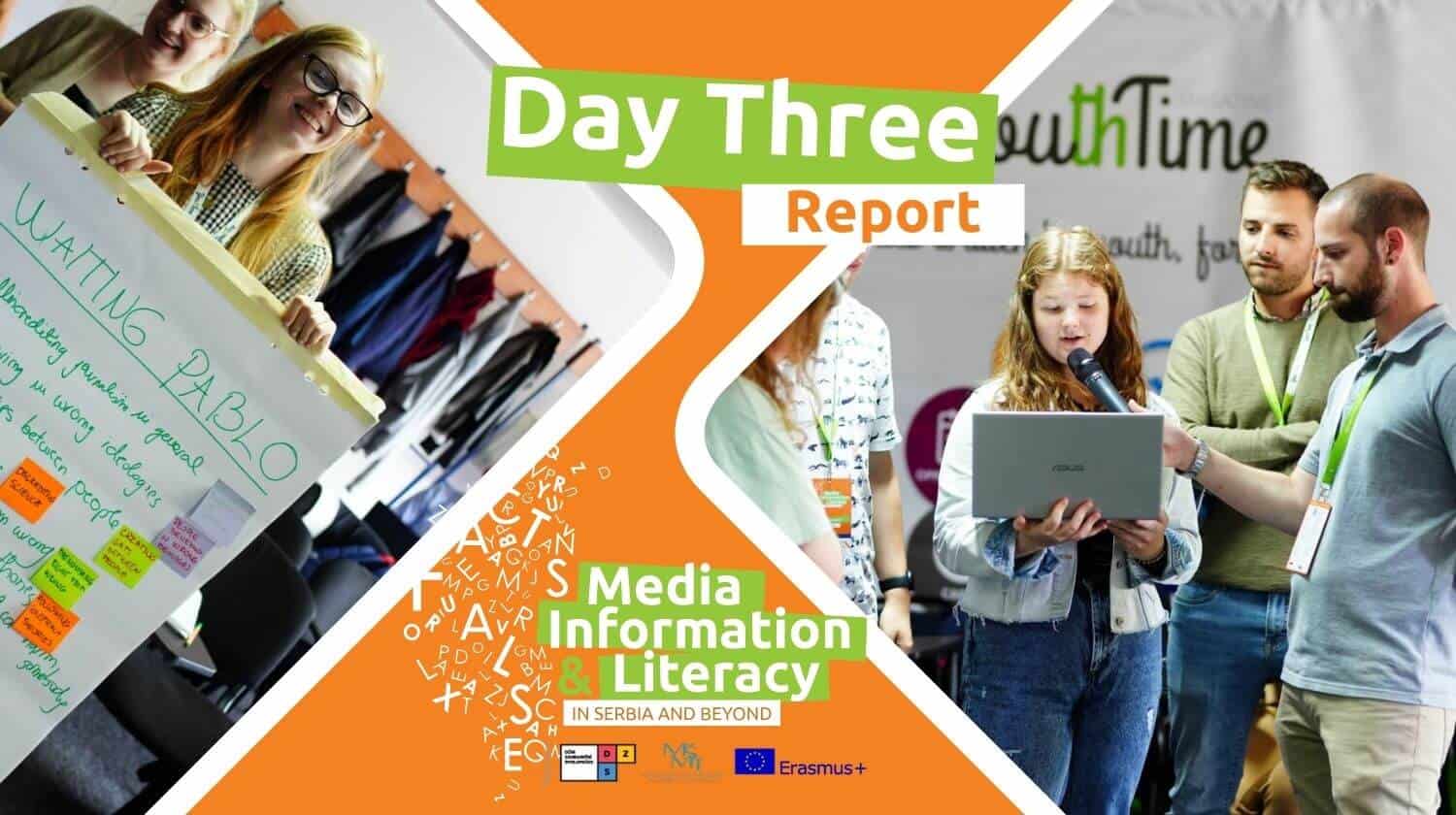After discussing social media and the role of journalists, Anna Demina brings you Day Three's report all about AI and fake news.
The fourth day of the Youth Time International Movement’s programme began with the topic Communication Mechanism: Rumours and why we trust them, which was talked by media professor Tamara Vučenović.
This topic is close not only to journalists, but to all people, because rumours often appear out of nothing, but in the media sphere they acquire a new colour and are sometimes even supported by dubious facts.
“What do you think when you find some news in the media or social networks? Do you think about the source of this information? Or share this information without hesitation?”, Tamara asked.
Constant presence in the media space and communication intensifies the spread of misinformation. The speaker asked the participants how they communicate in the media space.
“We are multitasking, you can look in your laptop and listen to me. We communicate on another level. We use images, stickers or abbreviations, it’s very important for us to make everything fast, we don’t write letters anymore. These were just some of the answers given by the performance as they discussed the effects of modern media communication
In the modern world, our young participants prefer fast communication, they don’t have a time to check the source, to ask ourselves ‘why do I read it, do I need to find another source’, this was really important lesson learnt, when discussing fake news.
Continuing with her theme, the Radio Belgrade host explained: “Pandemic shows us that we can work online, talk online, we can socialize ourselves online. This story has good and bad sides.”
Such constant consumption of content can lead to information poisoning. Therefore, it is necessary to limit ourselves and reduce the time that we spend on the Internet. This addiction, similar to smoking, can be difficult to get rid of.
Continuing with this theme, Tamara added: “Now we have a lot of news, but I remember the time when we heard really important news, or sad news from around the world. And we had time to think about it. Today after five minutes I hear something which can upset me again, and after five more minutes, we don’t have time to analyse, it’s a good ground for fake news.”
Trusting Media
There is no media that can be trusted unconditionally, even the most respected journalists have ever made mistakes. You cannot stop at one site or social network, you need to watch and check various media, understand the sources of information. An important lesson that has been a major talking point throughout the event.
When a person is focused on something, they are in a state of selective perception, then they is not able to find the truth. Therefore, it is always necessary to consider different sources, even those that do not correspond to the world view.
“Fake news can change journalism. One rash publication can ruin your reputation. And when there is no time to check the information, I choose not to publish it”, the speaker explained.
In order to get rid of rumours, fake news and misinformation, it is necessary to critically approach the choice of sources and consider different sides of the same issue.
Time For AI
The second meeting took place with Microsoft Digital Advisor, Karen De Sousa Pesse.
She spoke about fake news, misinformation and disinformation.
In order to understand the depth of this issue, it is important to understand the difference between misinformation and disinformation.
Misinformation is the unintentional dissemination of false information. Disinformation is the creation and dissemination of deliberately false information. It is difficult to understand what is more dangerous than misinformation or disinformation.
“I’m a citizen, I have my data everywhere and if you put my name in Google you can find three pages of information. It’s not my posts, it’s what other people write. I care where my data is.”, Karen opened.
Many useful things can be done with artificial intelligence, but now it has been used to spread propaganda and disinformation.
If people even try to distinguish the truth from the lies spread on websites or on TV, then it is difficult to understand that they are deceiving you if you see it with your own eyes.
This raises a new question. If AI can copy the appearance of people, then how to understand who is in front of us in the video, a living person or a machine?
For this, artificial intelligence technologies are also used that analyse movements and determine whether it is fake or reality.
It is necessary to be critical of the information consumed and not always trust what you see and hear.
The fourth day gave the participants an opportunity to clearly understand how to work with information so as not to fall victim to misinformation and fakes.
With the development of the Internet and the spread of false information, media literacy has become one of the most important topics among young people.
Perhaps this approach will help reduce the amount of lies and misinformation as they take these messages back to their communities after leaving Belgrade.
ICYMI here is part two of our reports from Belgrade.
Free To Speak: Day Two Of The Media Information And Literacy Programme
Support us!
All your donations will be used to pay the magazine’s journalists and to support the ongoing costs of maintaining the site.
Share this post
Interested in co-operating with us?
We are open to co-operation from writers and businesses alike. You can reach us on our email at [email protected]/[email protected] and we will get back to you as quick as we can.










